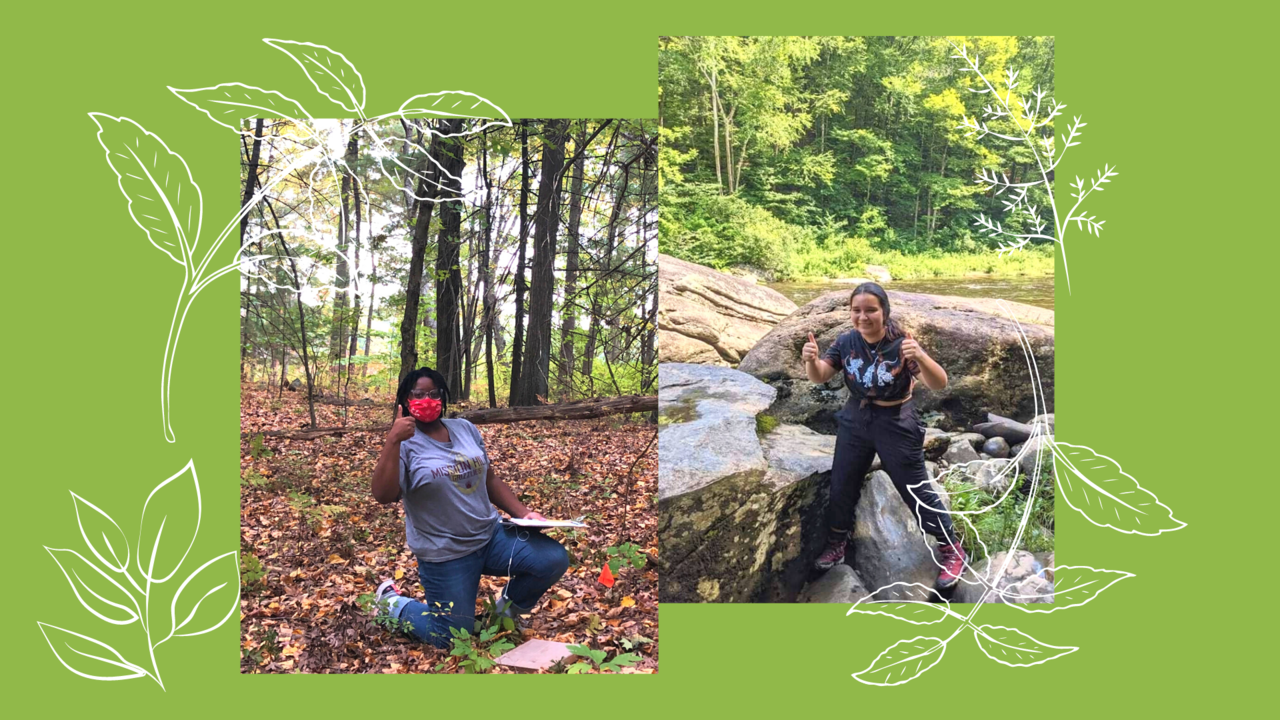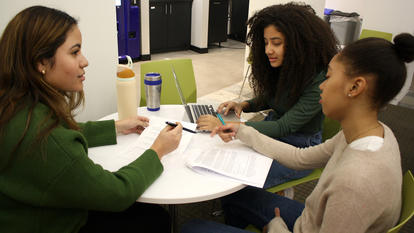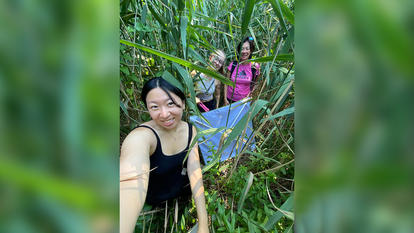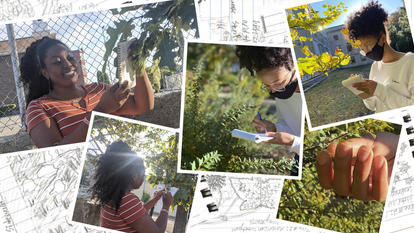
Antiracism Ambassadors Work to Redefine the Outdoors
“Everyone that wants a connection with nature should be able to have it, regardless of what they look like,” said Jada Onwuta ’24, an antiracism ambassador for Wellesley’s Paulson Ecology of Place Initiative. Onwuta said that when she arrived at the College, she brought with her the feeling that, as a Black person, she didn’t “belong” in green spaces, and she hesitated to explore places like Global Flora and the Edible Ecosystem. Now, through her work with Paulson, she questions why she ever felt that way.
Suzanne Langridge, director of the Paulson Initiative, said via email that the idea for the student antiracism ambassadors “came out of conversations our staff was having internally, particularly in the wake of the racial justice protests, as well as with the Botanic Gardens about the impacts of racism on relationships and access to the outdoors/nature.” The Paulson Initiative, the Wellesley College Botanic Gardens, the Frost Center for the Environment, and the Office of Sustainability took the proactive step of founding the Environmental Antiracism and Decolonization Student Working Group to hire student ambassadors who worked with staff advisors to develop activities and lead conversations to address these issues.
The ambassadors met virtually once a month during the school year with Inés Maturana Sendoya, associate dean of students for inclusion and engagement. They learned how to facilitate discussions about antiracism and inclusivity, and they discussed the projects they were working on. The Botanic Gardens and Paulson Initiative ambassadors developed programs to encourage the wider Wellesley community to talk about antiracism and decolonization of the outdoors, which is the effort to decenter the narrative that green spaces are made by and for the white community.
Onwuta, Dayna De La Cruz ’21, and Phoebe Shea Perez ’23 were the three antiracism ambassadors for the Paulson Initiative. Together they created a weeklong Wintersession program called “Redefining the Outdoors,” which focused on racial inclusivity and belonging in nature. Inspired by the 21 Days Against Racism challenge Sendoya led in the fall of 2020, the program addressed topics like how the participants’ identities shaped their experiences with the outdoors.
Angela Douglass ’24 and Marcela Hernandez ’23 served as antiracism ambassadors for the Botanic Gardens. Douglass also attended “Redefining the Outdoors,” where she participated in discussions about who is seen as an “outdoors person” and who is excluded from those spaces. Green spaces “seem natural and open,” she said, “but in reality become very segregated through different barriers.” Factors such as the cost of admission to national parks, the lack of representation in some outdoor-focused media like magazines or catalogs, and the cost of hiking and camping equipment can limit people’s access to much of the outdoor experience. So can the distance one has to travel to get to an open green space: A 2020 report from the Center for American Progress found that 74 percent of people of color live in nature-deprived areas of the country.
“We are working toward making [Global Flora] a display of culture as well, and really using that as a multicultural hub on campus.”
Angela Douglass ’24
Douglass and Hernandez, mentored by Jenn Yang ’12, associate director of the Botanic Gardens, created WCBG Grassroots: Sowing Anti-Racist Seeds for a More Equitable Outdoors, a reading club that looks at how botanic gardens have perpetuated colonialism and developed into spaces where people of color may feel they don’t belong, and discusses how to make them more inclusive.
The history of botanic gardens, Douglass explained, is one where colonizers would often “discover” a plant species in areas where native people already had a relationship with that specimen. Often colonizers would rename it, disregarding the history of the plant and its original name. One example in Global Flora, shared by Kristina Niovi Jones, director of the Botanic Gardens, is “a popular fruit tree native to the Philippines called bolobayaua or katmon. It was ‘formally’ named Dillenia philippinensis after a British botanist named Dillenius and its area of origin in the Philippines.”
Douglass said a goal for Global Flora is to “honor the culture and the pride behind [these plants].” “Global Flora is supposed to be this place of plants from all over the world, like a really awesome display of plants, but we are working toward making it a display of culture as well, and really using that as a multicultural hub on campus,” she said.
The ambassadors hope to keep these conversations going as the new academic year begins. The student working group will continue to meet and learn more about these topics and develop resources to share with the Wellesley community and beyond. De La Cruz, for example, has created a video on imposter syndrome focused on outdoor field research that incorporates her experience from working on “Redefining the Outdoors.”
Onwuta hopes students of color coming to Wellesley will feel welcome to explore the beauty around them and to enjoy the psychological benefits of spending time outdoors. “Every Wellesley student has the right to experience that,” she said. “We’re all here, we all got accepted, we all worked hard for it.”



